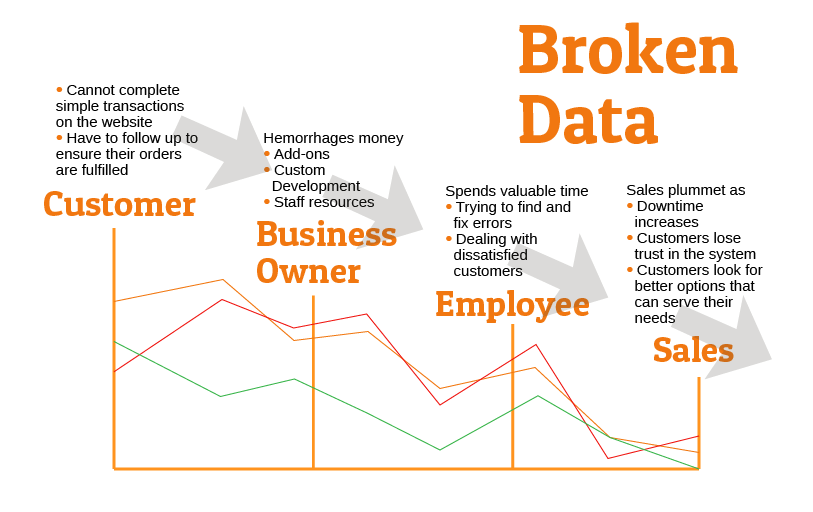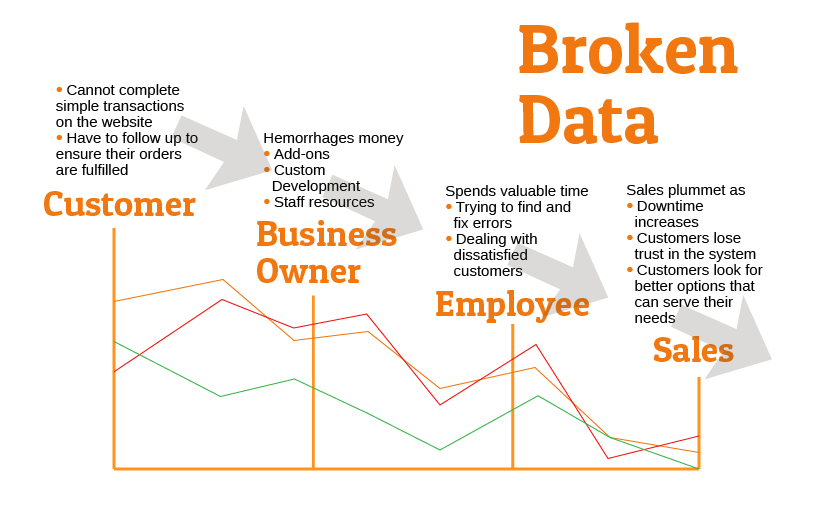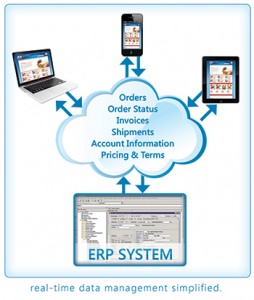Why Data Accuracy in ERP-Integration Matters


More than ever, mid-size businesses are dependant on sync tools and other software to allow the information in their ERP to be unlocked and used to power e-commerce, payment portals, and sales rep tools on their website.
This data is the backbone, if you will, of all the customer activity functions that now more than ever are taking place online.
If you’re depending on a website to do what it needs to do (which is a lot), you need to make sure that infrastructure is rock solid.
The data we’re talking about here is not insignificant, nor is it supplemental. It is the massive collection of core data that it takes to run an entire business, or at least a large chunk of it.
Think of all the customer account information - names, addresses, tax schedules, shipping addresses, notes, payment methods, favorites lists, reorder lists... the list goes on and on.
Not to mention all of the transactional data - invoices, payments, orders, warehouse selection, purchase and payment history, products, pricing, inventory, RMAs, and shipment tracking that must also be available on the website at all times.

The reality of an underpowered system is a long and frustrating battle that more often than not leads to losses. Because of a fear in losing their initial investment, some companies hold on for years, spending time and a small fortune trying to make the software into something it’s not.
This phenomena, called the “theory of regret” by Investopedia, can seriously derail progress if you’re not careful.
Temporary fixes, development creep, add-on purchases, and otherwise ineffective band-aids usually land companies right back at square one, but with less money in their pocket.
Without the stability and infrastructure of a reliable connection, problems quickly start to pile up.
Common errors incurred when the sync tool takes too long to get data out of the database:
1) Exchange of information takes too much time to complete, operation times out and is never transferred, causing data to go missing
2) Account changes do not transfer, causing duplicate, mismatched customer records
3) Data shows up, but is inaccurate, incomplete, or out of order
a. Shipping address that don’t have customers, invoice lines that don’t have item numbers, etc.
Common errors that result from internet connection or server failure during data exchange:
1) The process is dropped, all collected information fails to transfer, and data is lost
2) There is no alert or notification that tells you when this occurs, how much or which data has been lost
This can lead to very unhappy customers, as you can imagine. Website users don’t care about your “technical issues”. They just want to place an order on your site, or check the status of a shipment without worrying about whether or not you have received their request, credit card details, or that 2 page order they just finished entering in on your website. You can be sure your phone will be ringing off the hook, and even loyal customers will start to lose trust in your company if this goes on for any length of time.
Even if you knew what data needed to be fixed, some ERP to Website connectors do not allow for manual corrections to be made in-house. You must call and request the updates to be made and wait for someone else to correct the records. Be prepared for a long wait if the company that sold you the software doesn’t also employ a full staff of support representatives to take care of these ad-hoc requests. For companies who want to grow, this business model quickly falls apart as more and more orders, and more and more errors, come through the system.

In a world where customers are demanding more and more online connectivity, it is imperative to guard the integrity of the data that runs your website and powers your business. As data breaks down, so does the entire operation it is tied to - leading to missed sales opportunities, frustrated customers, and a damaged bottom line.
Finding a permanent and stable software solution from the start is the best way to prevent losses and increase your chances at being successful in e-commerce and the online marketplace.
For information about CIMcloud's technology platform and 100% data accuracy project: Schedule a demo





